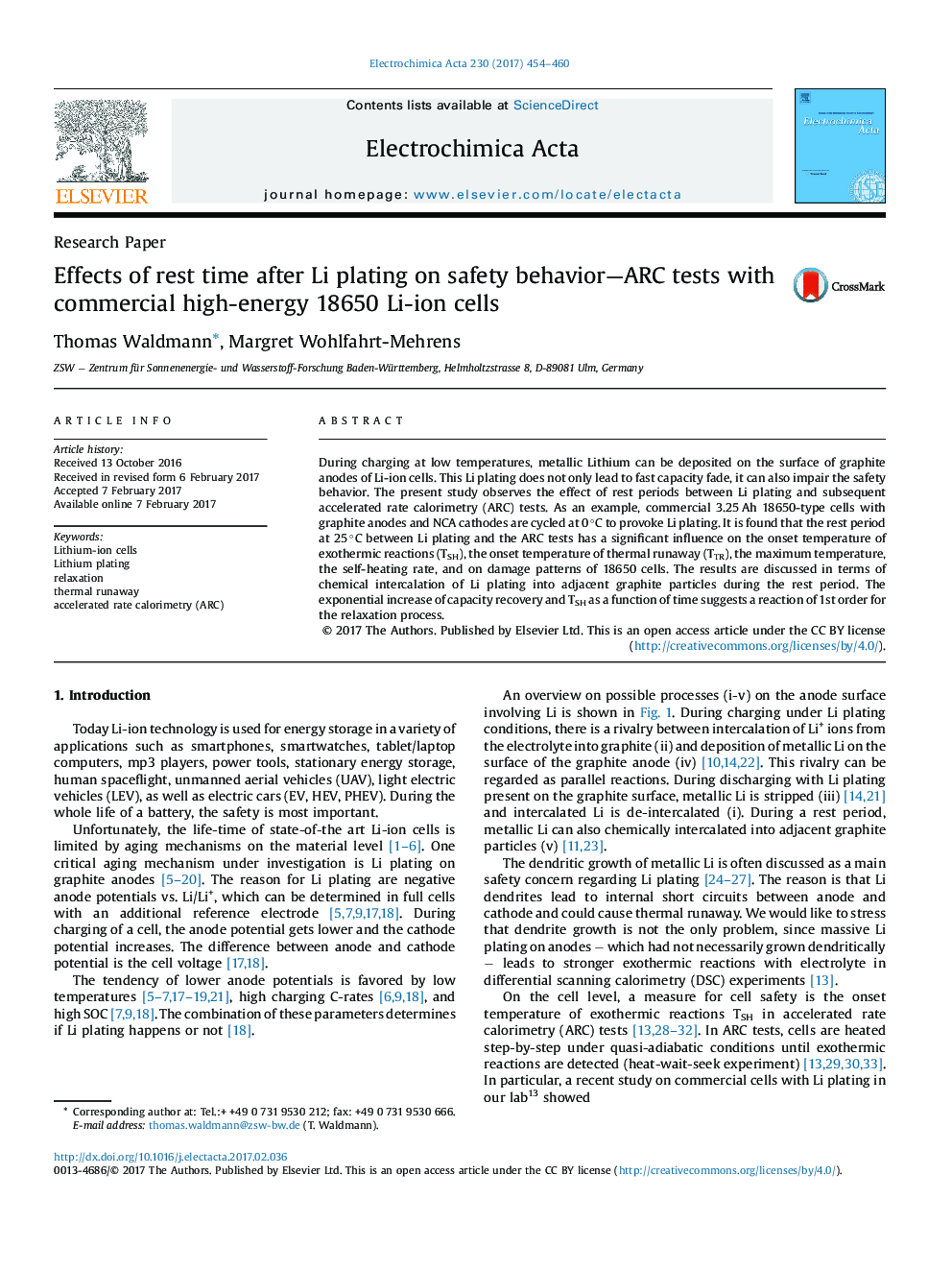| Article ID | Journal | Published Year | Pages | File Type |
|---|---|---|---|---|
| 6471465 | Electrochimica Acta | 2017 | 7 Pages |
During charging at low temperatures, metallic Lithium can be deposited on the surface of graphite anodes of Li-ion cells. This Li plating does not only lead to fast capacity fade, it can also impair the safety behavior. The present study observes the effect of rest periods between Li plating and subsequent accelerated rate calorimetry (ARC) tests. As an example, commercial 3.25 Ah 18650-type cells with graphite anodes and NCA cathodes are cycled at 0 °C to provoke Li plating. It is found that the rest period at 25 °C between Li plating and the ARC tests has a significant influence on the onset temperature of exothermic reactions (TSH), the onset temperature of thermal runaway (TTR), the maximum temperature, the self-heating rate, and on damage patterns of 18650 cells. The results are discussed in terms of chemical intercalation of Li plating into adjacent graphite particles during the rest period. The exponential increase of capacity recovery and TSH as a function of time suggests a reaction of 1st order for the relaxation process.
